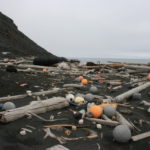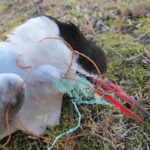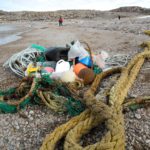Cleanup Guidelines
Clean up Svalbard – A joint effort to remove waste from the shores of Svalbard
Join the Clean up Svalbard campaign
Waste is carried by ocean currents and washes ashore in the Svalbard archipelago. For almost 20 years, inhabitants and visitors have been encouraged to pick up marine debris when they visit the coast.
What is Clean up Svalbard?
- Almost 20 years ago, an expedition cruise company saw an opportunity to help clean up marine debris around Svalbard during voyages. The operator approached the Governor of Svalbard who offered logistical support to handle the waste. Clean up Svalbard was born, and more AECO members and local organizations got involved.
- In recent years, about 20 tons of waste have been removed from beaches in Svalbard every summer. Expedition ships remove between 3 – 4 tons per season.
- The Governor of Svalbard organizes dedicated cleanup trips for locals twice a year while other local associations hold additional events, mainly in Isfjorden.
- According to studies of the collected waste in 2016 and 2017, 60-80% of it comes from the fishery industry.
How can you help?
- Secure all your belongings so you do not lose any items overboard or on land.
- Your expedition team will bring dedicated cleanup bags ashore during your visits.
- Pick up any plastic or other marine debris you find during landings while making sure you do not stray away from your group.
- If you spot items that are out of reach, point them out to your expedition team.
- Your ship will transport the waste back to Longyearbyen where it will be disposed of in a dedicated container set up by the local council.
- The total amount of waste collected will be weighed at the end of the summer so our efforts can be measured.
Special notes
- Be aware of cultural remains – do not disturb historical sites. When unsure whether an item is waste or not, ask your expedition staff or leave it where it is.
- The Governor of Svalbard is monitoring two beaches on the northwest coast of Spitsbergen therefore we do not collect waste from those two control areas.
Continue at home
- The Arctic is a dead end for marine debris. To tackle the spread of more waste, we need to reduce the amount we produce. This is why AECO joined the UNEP Clean Seas campaign and supports its members’ initiatives to reduce the amount of single-use items on board their vessels. In turn, you can help by:
- Reducing the amount of disposable items you use such as water bottles and straws.
- Taking part in cleanups at home and other places.



Learn more about AECO’ Clean Seas Project here.

